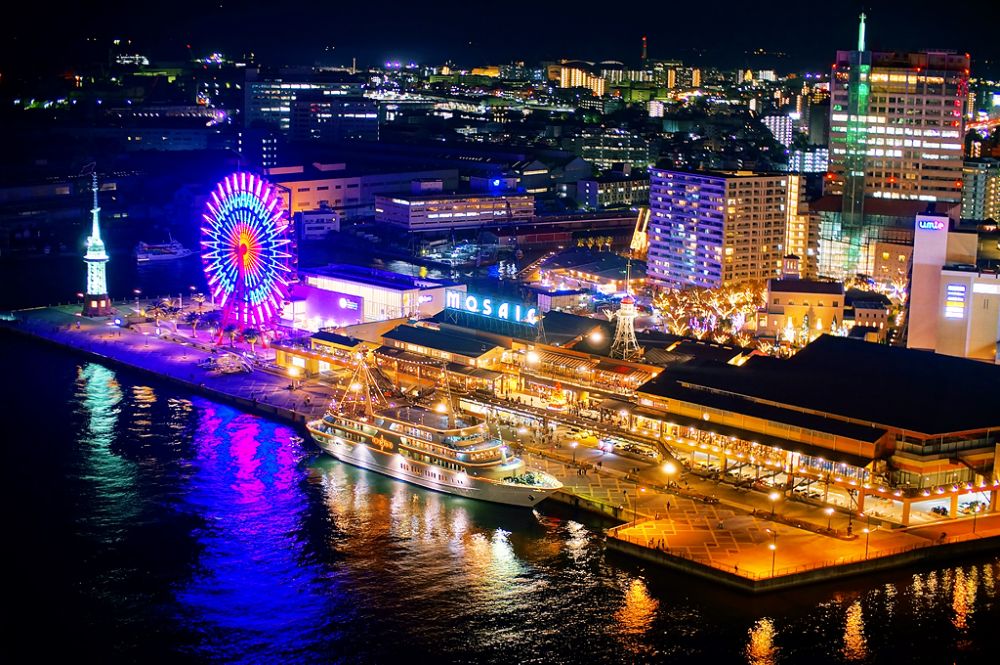

Kobe Harborland is a prominent shopping and entertainment district in Kobe, Japan. Located along the waterfront, the area has been transformed over the years from a historic port to a modern tourist attraction, contributing significantly to Kobe's tourism industry.
Kobe, once known for being one of Japan's most important port cities, played a crucial role in international trade following the end of Japan's period of national isolation in the mid-19th century. Kobe's port facilities grew rapidly, and by the 20th century, the port area was bustling with activity. However, as maritime technology evolved and modern container shipping grew, old docks and warehouses became less utilized.
In the 1990s, the city of Kobe decided to redevelop the underused dockyards and warehouses into a new commercial and leisure district. This marked the birth of Kobe Harborland in 1992, envisioned as a space that would attract both locals and tourists to the city waterfront.
Tragedy struck in 1995 when the Great Hanshin Earthquake caused devastating damage to the city of Kobe, including the Harborland area. This disaster led to a period of reconstruction, during which Kobe Harborland was revitalized as a symbol of hope and resilience for the people of Kobe.
Transformed into a diverse complex, including shops, restaurants, parks, hotels, and an amusement area, Kobe Harborland quickly re-emerged as a favored destination for both domestic and international visitors.
Today, Kobe Harborland is at the forefront of Kobe's tourism trends, offering a harmonious blend of historic nostalgia and modern entertainment. Tourists flock to the district to enjoy its spectacular nighttime views, complete with an illuminated skyline and the iconic Kobe Port Tower.
The area boasts a variety of attractions, including the Kobe Anpanman Children's Museum & Mall, the retro-style shopping complex Mosaic, and Umie, which encompasses a vast range of retail stores. Cultural experiences such as jazz clubs and annual festivals align with the global trend towards immersive travel experiences.
One of the latest trends seen in Kobe Harborland is the rising popularity of gourmet tourism. With its array of high-quality, seafront dining options, Harborland offers a deep dive into the local culinary scene, featuring famous Kobe beef among other local delicacies.
Looking ahead, Kobe Harborland is expected to continue evolving, with ongoing improvements and expansions aimed at enhancing the experience for visitors. Embracing sustainability, cultural exchange, and innovative technology remains key to keeping the district attractive for the new waves of global travelers.
As tourism trends shift towards more personalized and eco-conscious travel, Kobe Harborland is poised to adapt and thrive, ensuring it remains a cherished destination for years to come.
Kobe Harborland is a testament to the dynamic history of Kobe as it pivoted from a traditional port to a bustling tourist hotspot. Its ability to blend history with modern appeal makes it a unique and enduring feature of Japan's tourism landscape, drawing travelers from around the world to experience its charm.